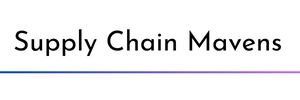Photo credit: Ben Watts from Ottawa, Canada, CC BY 2.0 , via Wikimedia Commons
It is pretty safe to say the 2020 was a year like no other and supply chains around the world were tested like never before. If your company survived the impact of COVID–19, then reach around and pat yourself on the back. But then it is time to get back to work and figure out how you will survive the next curveball that will inevitably be thrown at you. Because the handwriting is on the wall. The upheaval that began a year ago is far from over.
As I was preparing this newsletter, the Ever Given, a massive container ship that is as long as four football fields, became wedged across the Suez Canal. About 12 percent of global trade passes through the Suez Canal, which provides the shortest sea link between Asia and Europe. The blockage sent oil prices climbing by 4 percent on International markets. The repercussions will be felt around the world.
We cannot know what type of global disruptions will occur. But what the best executives and their supply chain teams are doing is looking to build resiliency into their supply chains, so that they can be better prepared when the next disaster (big or small) occurs. Best practices include a strategic and regular evaluation of operational strengths and weaknesses. These steps, coupled with the same evaluation of key suppliers, can provide an understanding of the actions needed to ensure business continuity.
This month, we share the story of how one tiny ice cream maker built greater resiliency into his operations. We also provide you with an assortment of resources from thought leaders so that you can take action to improve your ability to withstand whatever disruption comes your way.
We want to hear from you! Share your resiliency stories, thoughts and comments with us.
